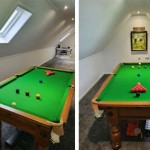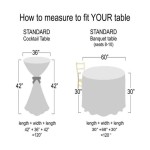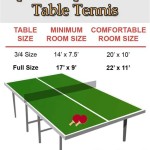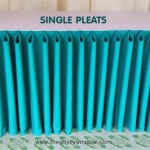What Wood to Use for Raised Vegetable Beds: A Comprehensive Guide
Raised vegetable beds offer numerous advantages for gardeners, including improved drainage, better soil control, and reduced back strain. The longevity and safety of these beds, however, are significantly influenced by the type of wood used in their construction. Selecting the appropriate wood requires careful consideration of factors such as rot resistance, chemical treatments, and overall cost. This article will delve into various wood options suitable for raised vegetable beds, outlining their properties and potential drawbacks to assist gardeners in making informed decisions.
Understanding Wood Properties and Degradation in Garden Environments
Wood, being an organic material, is susceptible to decay when exposed to moisture, microorganisms, and insects. The rate of degradation depends on the wood's natural durability and the presence of protective treatments. Heartwood, the central core of a tree, generally exhibits greater resistance to decay than sapwood, the outer layers. Different wood species possess varying levels of natural resistance to rot and insect infestation. Factors such as soil contact, exposure to sunlight, and drainage conditions significantly impact the lifespan of wood used in raised beds.
Treated lumber, impregnated with preservatives, offers increased protection against decay and insects. However, the type of treatment used is crucial, particularly in vegetable gardens where chemicals can potentially leach into the soil and be absorbed by plants. It is imperative to select treated lumber that is specifically approved for use in garden settings to minimize the risk of contamination.
Exploring Naturally Rot-Resistant Wood Options
Several wood species exhibit natural resistance to decay, making them suitable options for constructing raised vegetable beds without the need for chemical treatments. These woods contain natural oils and compounds that inhibit the growth of fungi and deter insects.
Cedar: Cedar is a widely popular choice due to its aromatic scent, aesthetic appeal, and natural resistance to rot and insects. Western Red Cedar is particularly favored for its durability and lifespan. It contains thujaplicins, natural compounds that act as fungicides and insecticides. While more expensive than some other options, cedar's longevity can make it a worthwhile investment. It's important to understand the difference between various cedar species, as some are more rot-resistant than others. For instance, Incense Cedar has less resistance compared to Western Red Cedar.
Redwood: Redwood, similar to cedar, contains natural compounds that provide resistance to decay and insects. It is known for its beautiful reddish-brown color and dimensional stability. Redwood is relatively lightweight and easy to work with. However, old-growth redwood is becoming increasingly scarce and expensive. Therefore, using reclaimed redwood or sustainably harvested redwood is recommended to minimize environmental impact.
Black Locust: Black Locust is a hardwood that is exceptionally durable and rot-resistant. It is native to North America and often used for fence posts and other outdoor applications. Black Locust is naturally dense and strong, making it resistant to both decay and insect damage. While it can be more challenging to work with due to its hardness, its longevity makes it a sustainable and cost-effective option over the long term.
Cypress: Cypress, particularly Bald Cypress, is a softwood known for its resistance to decay in wet environments. It is commonly used in boat building and other applications where moisture exposure is high. Cypress contains cypressene, a natural preservative that protects it from rot and insects. While less readily available than cedar or redwood in some regions, it can be a durable and attractive option for raised beds.
Analyzing Treated Lumber for Raised Bed Construction
Treated lumber offers a more affordable alternative to naturally rot-resistant woods. However, it is crucial to select treated lumber that is safe for use in vegetable gardens to avoid potentially harmful chemicals leaching into the soil.
Chromated Copper Arsenate (CCA): CCA-treated lumber was widely used in the past but has been phased out for residential applications due to concerns about arsenic leaching. It is no longer recommended for raised vegetable beds or any application where human contact is likely.
Alkaline Copper Quaternary (ACQ): ACQ is a common alternative to CCA, using copper and quaternary ammonium compounds as preservatives. While considered safer than CCA, some studies have shown that copper can still leach from ACQ-treated lumber, particularly in acidic soils. Using a liner between the treated wood and the soil can help minimize potential contamination.
Copper Azole (CA): CA is another alternative to CCA, using copper and azole compounds as preservatives. It is generally considered safe for use in garden settings, but similar to ACQ, copper leaching can still occur. Again, using a liner can provide an extra layer of protection.
Borate-Treated Lumber: Borate-treated lumber uses borates as a preservative, which are relatively non-toxic to humans and plants. However, borates are water-soluble, making borate-treated lumber less suitable for applications where it will be in direct contact with soil and moisture. It may be appropriate for the upper portions of raised beds that are less exposed to water.
When using any treated lumber, it is recommended to check with the manufacturer or retailer to ensure that it is approved for use in garden settings and to follow any specific recommendations regarding its application.
Considering Alternatives to Traditional Wood
Beyond traditional wood, several alternative materials can be used to construct raised vegetable beds, offering varying degrees of durability, sustainability, and aesthetic appeal.
Composite Lumber: Composite lumber, made from recycled plastic and wood fibers, is resistant to rot, insects, and moisture. It is a durable and low-maintenance option that can last for many years. However, it can be more expensive than traditional wood and may not have the same aesthetic appeal. Some composite lumber may also release microplastics into the environment over time, so careful consideration should be given to the specific type of composite lumber used.
Metal: Metal, such as galvanized steel or aluminum, is an extremely durable and long-lasting option for raised beds. It is resistant to rot, insects, and pests. Metal beds can be particularly effective in areas with heavy clay soils. However, metal can heat up quickly in direct sunlight, which can potentially affect plant roots. Using reflective paint or providing shade can help mitigate this issue. Galvanized steel can leach zinc into the soil, so it's best to use a food-grade liner to avoid direct contact between the soil and the metal.
Stone or Brick: Stone or brick can create attractive and durable raised beds. They are resistant to rot, insects, and pests, and can provide excellent insulation for plant roots. However, stone and brick can be more expensive and labor-intensive to install than wood. They can also be challenging to move if you decide to relocate your garden.
Recycled Materials: Using recycled materials, such as concrete blocks, old tires (though potential for leaching should be considered), or reclaimed wood, can be a sustainable and cost-effective way to build raised beds. However, it is important to ensure that the materials are safe for use in a vegetable garden and that they will not leach harmful chemicals into the soil.
When selecting materials for raised vegetable beds, it is essential to consider the specific needs of your plants, the climate in your region, and your personal preferences. Careful planning and research can help you choose the best option for your garden.
In conclusion, selecting the right wood for raised vegetable beds is a critical decision that impacts the longevity, safety, and overall success of the garden. By understanding the properties of different wood species, the considerations for treated lumber, and the alternatives available, gardeners can make informed choices that align with their gardening goals and environmental values. Further research tailored to local resources and specific soil conditions is always encouraged to ensure the best outcome for the raised bed garden.

Raised Garden Bed Woodlogger

Build A Raised Garden Bed With Treated Wood Tague Lumber

Raised Garden Bed Materials Figure Out Your Diy Setup

A Stylish Raised Bed Almost Anyone Can Build Finegardening

How To Build A Wood Raised Garden Bed Gate

How To Create Raised Beds With Wood The Simple Secrets Success

Raised Bed Garden Construction Part 3 Staining And Sealing The Impatient Gardener

How To Create Raised Beds With Wood The Simple Secrets Success

How To Build Hugelkultur Raised Garden Beds Roots Boots

Raised Bed Garden Construction Part 2 From The Ground Up Impatient Gardener








